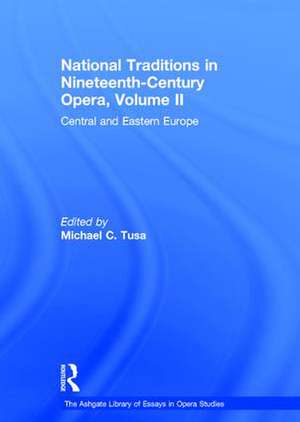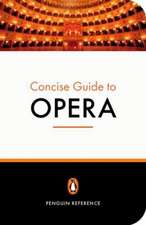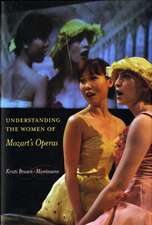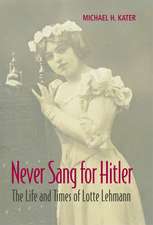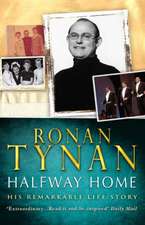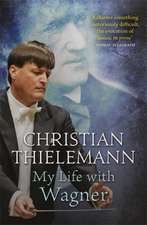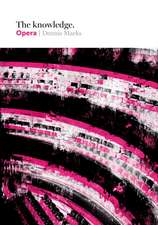National Traditions in Nineteenth-Century Opera, Volume II: Central and Eastern Europe: The Ashgate Library of Essays in Opera Studies
Editat de Michael C. Tusaen Limba Engleză Hardback – 23 dec 2010
| Toate formatele și edițiile | Preț | Express |
|---|---|---|
| Paperback (1) | 226.75 lei 6-8 săpt. | |
| Taylor & Francis – 14 oct 2024 | 226.75 lei 6-8 săpt. | |
| Hardback (1) | 1056.43 lei 6-8 săpt. | |
| Taylor & Francis – 23 dec 2010 | 1056.43 lei 6-8 săpt. |
Preț: 1056.43 lei
Preț vechi: 1412.38 lei
-25% Nou
Puncte Express: 1585
Preț estimativ în valută:
202.21€ • 219.72$ • 169.97£
202.21€ • 219.72$ • 169.97£
Carte tipărită la comandă
Livrare economică 21 aprilie-05 mai
Preluare comenzi: 021 569.72.76
Specificații
ISBN-13: 9780754629061
ISBN-10: 0754629066
Pagini: 530
Dimensiuni: 169 x 244 x 40 mm
Greutate: 1.22 kg
Ediția:New ed
Editura: Taylor & Francis
Colecția Routledge
Seria The Ashgate Library of Essays in Opera Studies
Locul publicării:Oxford, United Kingdom
ISBN-10: 0754629066
Pagini: 530
Dimensiuni: 169 x 244 x 40 mm
Greutate: 1.22 kg
Ediția:New ed
Editura: Taylor & Francis
Colecția Routledge
Seria The Ashgate Library of Essays in Opera Studies
Locul publicării:Oxford, United Kingdom
Cuprins
Contents: Introduction; Part I German Opera in the Early 19th Century: The arias of Marzelline: Beethoven as a composer of opera, Philip Gossett; New light(s) on Weber's Wolf's Glen scene, Anthony Newcomb; Richard Wagner and Weber's Euryanthe, Michael C. Tusa. Part II Wagner: The Ring and the conditions of interpretation: Wagner's writing, 1848 to 1852, James Treadwell; ...wie ein rother Faden: on the origins of 'leitmotif' as critical construct and musical practice, Thomas Grey; The structure of the Ring and its evolution, Robert Bailey; Dramatic recapitulation in Wagner's Götterdämmerung, William Kinderman; Wagner, 'On modulation' and Tristan, Carolyn Abbate; Death drive: Eros and Thanatos in Wagner's Tristan und Isolde, Linda Hutcheon and Michael Hutcheon; Constructing Nuremberg: typological and proleptic communities in Die Meistersinger, Arthur Groos; Amfortas's Prayer to Titurel and the role of D in Parsifal: the tonal spaces of the drama and the enharmonic C-flat/B, David Lewin; Strange love or, how we learned to stop worrying and love Wagner's Parsifal, John Deathridge. Part III Russian Opera: On Ruslan and Russianness, Marina Frolova-Walker; Mussorgsky's Boris on the stage of the Maryinsky Theater: a chronicle of the first production, Robert William Oldani; Mussorgsky's libretti on historical themes: from the two Borises to Khovanshchina, Caryl Emerson; The semiotics of symmetry, or Rimsky-Korsakov's operatic history lesson, Simon Morrison. Part IV Strauss and Janácek: Strauss and the pervert, Sander L. Gilman; Fin-de-siècle fantasies: Elektra and the culture of supremacism, Lawrence Kramer; Janácek's speech-melody theory in concept and practice, Paul Wingfield; Evasive realism: narrative construction in Dostoyevsky's and Janácek's 'From the House of the Dead', Geoffrey Chew and Robert Vilain; Name Index.
Notă biografică
Michael C. Tusa, Professor, University of Texas at Austin, USA
Descriere
This volume offers a cross-section of English-language scholarship on German and Slavonic operatic repertories of the 'long nineteenth century', giving particular emphasis to four areas: German opera in the first half of the nineteenth century; the works of Richard Wagner after 1848; Russian opera between Glinka and Rimsky-Korsakov; and the operas of Richard Strauss and Janácek. The essays reflect diverse methods, ranging from stylistic, philological and historical approaches to those rooted in hermeneutics, critical theory and post-modernist inquiry.
